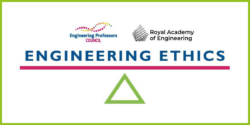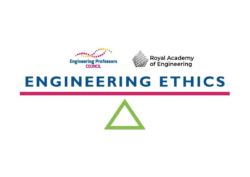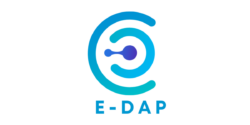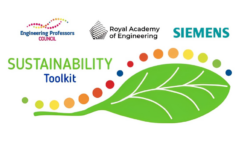Submit a teaching activity/resource
The Complex Systems Toolkit Working Group seeks contributors to create teaching activities based on the following briefs:
1. Case Studies that, through a real-world situation, illustrate different types of complex systems, use cases for the tools that can be used to model / simulate these, techniques that promote development and use of systems architecture, and effects such as trade-offs, emergent properties, impacts, or unintended consequences. Case studies could also reference the implications for risk, security, ethics, sustainability, teamwork, and communication.
Case study topics could include:
-
- Air traffic control
- Smart agriculture
- Autonomous driving
- Robotics
- Smart cities
2. Demonstrator simulations that provide examples of how systems can be modelled.
This could include:
-
- Examples of simple, complicated, and complex systems
- Interactive examples showing how well-intentioned action can lead to failure
- Interactive examples showing the best approaches to handling complexity
3. Lesson plans, coursework and teaching activities that are useful in integrating learning around complexity, systems thinking, and complex systems.
These resources should promote active learning pedagogies and real-world teaching methods by showing how complex systems teaching can be embedded within technical problems and engineering practice. Through these resources, we aim to help upskill UK engineering educators so that they feel capable of and confident in integrating complex systems into their engineering teaching.
The deadline for submitting a teaching activity is 15th August 2025.
Step 1a: Read the guidance for submitting a case study
Guidance #1: Research Guidance #2: Overview Guidance #3: Authenticity Guidance #4: Complexity of issue Guidance #5: Activities and resourcesGuidance #6: Educational level & AssessmentGuidance #7: Format
Research
Teaching activities are resources that users can access to help them know what to integrate and implement. These include use cases/case studies which provide examples of complex systems which can be directly utilised in teaching with the suggested tools, as well as other classroom activities such as coursework, project briefs, lesson plans, demonstration simulations, or other exercises.
Before you begin, you should review case studies that form a part of the EPC’s Sustainability Toolkit or Ethics Toolkit, since we hope that contributions to the Complex Systems Toolkit will be fairly consistent in length, style, and tone. While complex systems cases may not have the same learning outcomes, the format and approach should be similar. Remember that the audience for these case studies is educators seeking to embed complex systems concepts within their engineering teaching.
Case studies present real-world scenarios that can be used in teaching about complex systems in engineering. They provide students with opportunities to explore complex systems tools, and trade-offs, in authentic contexts, and reflect on decisions made about them.
They are usually based on a real example, although fictionalised cases are acceptable when they are grounded in realistic detail. Case studies should enable students to identify or interpret key features of complex systems (feedback loops, interdependence or emergent behaviour) and apply relevant tools or frameworks to make sense of the situation.
Case studies will vary in length depending on scope and resource, but many are around 1500-2000 words. They should reference relevant online open-source resources.
Please see the current research on good practice in writing case studies, which you may find helpful as you write, as well as our article about a recipe for writing a case study. This ‘recipe’ can guide you as you write to include or develop other aspects of the case. Both articles are from our Engineering Ethics Toolkit, but the guidance given can be adapted for complex systems cases.
Overview
The case study should be presented as a narrative about a complex systems issue in engineering.
Narrative strength: the case should be clearly structured with a compelling and coherent story. System complexity: it should explore interdependencies, multiple stakeholders and/or competing goals. Tool integration: systems tools should be mentioned or incorporated (e.g. soft systems methodology, SysML, Agent-based modelling etc). Activities and Resources: there should be questions, prompts or teaching activities to guide discussion or classroom use.
Authenticity
Case studies are most effective when they feel like they are realistic, with characters that you can identify or empathise with, and with situations that do not feel fake or staged. Giving characters names and backgrounds, including emotional responses, and referencing real-life experiences help to increase authenticity.
Complexity of issue
Many cases are either overly complicated so that they become overwhelming, or so straightforward that they can be “solved” quickly. A good strategy is to try to develop multiple dimensions of a case, but not too many that it becomes unwieldy. Additionally, complexity can be added through different parts of the case so that instructors can choose a simpler or more complicated version depending on what they need in their educational context.
Activities and resources
You should provide a variety of suggestions for discussion points and activities to engage learners, as well as a list of reliable, authoritative open-source online resources, to both help educators prepare and to enhance students’ learning. Where information is presented from another source, it needs to be properly referenced using Harvard referencing.
Educational level and Assessment
Educational level: When writing your case study, you should consider which level it is aimed at. A Beginner-level case is aimed at learners who have not had much experience in engaging with a complex problem, and usually focuses on only one or two dimensions of a challenge. An Advanced-level case is aimed at learners who have had previous practice in engaging with complex systems, and often addresses multiple challenges. An Intermediate case is somewhere in between.
Assessment: If possible, suggest assessment opportunities for activities within the case, such as marking rubrics or example answers.
Format
The case study should follow the following format:
- Teaching notes (with learning objectives, time needed, materials): This is an overview of the case and its dilemma, and how it relates to AHEP4 and INCOSE competencies.
- Learning and teaching resources: A list of reliable, authoritative, open-source online resources that relate to the case and its dilemma. These can be from a variety of sources, such as academic institutions, journals, news websites, business, and so on. We suggest a minimum of five sources that help to provide context to the case and its dilemmas. You may want to suggest an author flag up certain resources as suggested pre-reading for certain parts of the case, if you feel that this will enrich the learning experience.
- Summary of system or context.
- Narrative of the case (presenting the complexity).
- Questions and activities. This is where you provide suggestions for discussions and activities related to the case and the dilemma.
- Further discussion or challenge (optional). Some case studies are sufficiently complex at one dilemma, but if the case requires it you can provide further parts (up to a maximum of three).
- References: use Harvard referencing.
- Resources (ideally online and open source).
- If possible, suggest assessment opportunities for activities within the case, such as marking rubrics or example answers.
- Keywords: On the submission form you will be prompted to provide keywords, including educational aims, issues and situations highlighted in the case.
Step 2a: Before you submit, review this checklist:
- Does it follow the correct format?
- Narrative strength: is the case clearly structured with a compelling and coherent story?
- System complexity: does it explore interdependencies, multiple stakeholders and/or competing goals?
- Tool integration: are systems tools mentioned or incorporated (e.g. soft systems methodology, SysML, Agent-based modelling etc)
- Activities and Resources: Are there questions, prompts or teaching activities to guide discussion or classroom use?
- Are open resources or links to other toolkit materials included?
- Are sources cited using Harvard referencing?
- What additional references have you included?
- Before you submit your contribution, have you registered as a contributor? If not, please register your interest here.
Step 1b: Read the guidance for submitting a different teaching activity
Guidance #1: Purpose & outcomesGuidance #2: Research Guidance #3: Purpose Guidance #4: Presentation & clarityGuidance #5: Resources & guidanceGuidance #6: Format
Purpose & outcomes
Teaching Tools are intended to support educators’ ability to apply and embed complex systems concepts within their engineering teaching.
Educators need to quickly and easily find help with:
-
- Adapting and integrating existing complex systems resources to their disciplinary context;
- Implementing new and different pedagogies that support complex systems learning.
- Structuring lessons, modules, and programmes so that complex systems skills and outcomes are central themes.
Thus, these teaching tools will provide crucial guidance for those who may be teaching complex systems-related material for the first time, or who are looking for new and different ways to integrate complex systems concepts into their teaching.
They may take the form of learning activities, project briefs, modelling or simulation activities, technical content related to complex systems, worksheets, slides, or other similar teaching materials.
Before you begin to write, you should familiarise yourself with content that has been created to complement case studies in our Ethics Toolkit and teaching tools in our Sustainability Toolkit since we want these resources to be produced in a similar style and format.
Purpose
Imagine that you are an engineering educator who is new to teaching complex systems concepts. You turn to this teaching tool to help you apply and embed these in your module.
-
- Does this resource help introduce or develop concepts related to complex systems or systems thinking so that learners can engage with these topics in the context of engineering?
- If not, what is needed to make this possible?
Presentation and Clarity
Depending on the resource, you may choose to provide worksheets, slides, problem sets, or narrative prompts.
-
- Is the resource explained in such a way that someone new to teaching complex systems could understand how to use it?
- Is the material clearly introduced and described?
Resources and Guidance
Depending on the topic, educators may need additional resources or guidance to support their use of the material. For instance, background information may be required or a technical topic explained.
-
- Have you provided sufficient material so that educators can easily employ the resource?
- Do references use Harvard referencing?
Format
The teaching tool should follow this format:
- Overview
- Short description of what the resource is and what it aims to do.
- States how it is related to complex systems or systems thinking, referring to external content such as INCOSE Competencies and AHEP 4.
- Provides an overview of the activity, suggesting how it might be implemented and in what contexts, how long it might take, and any other relevant delivery information.
- Details any specific materials or software required for the activity, as well as any modelling or simulation tools to be used.
- Lists any learning and teaching resources recommended in order to undertake the activity, including suggested pre-reading or other references.
- Explains the activity in as much detail as is required (this will vary depending on the type of material the resource addresses.)
- If relevant, provides assessment guidance–marking rubrics, sample answers, etc.
Step 2b: Before you submit, review this checklist:
- Does this resource help introduce or develop concepts related to complex systems or systems thinking so that learners can engage with these topics in the context of engineering?
- Is the resource explained in such a way that someone new to teaching complex systems could understand how to use it?
- Is the material clearly introduced and described?
- Have you provided sufficient material so that educators can easily employ the resource?
- Do references use Harvard referencing?
- Does it follow the correct format?
Step 3: Submitting your teaching activity
The deadline for submitting a teaching activity is 15th August 2025.
To ensure that everyone can use and adapt the Toolkit resources in a way that best fits their teaching or purpose, this work will be licensed under a Creative Commons Attribution-ShareAlike 4.0 International License. Under this licence users are free to share and adapt this material, under terms that they must give appropriate credit and attribution to the original material and indicate if any changes are made.
Teaching activities should be submitted in Word file format (.doc or .docx). Any corresponding images should be submitted in either .jpeg, .jpg or .png format.
You may download a PDF version of the guidelines (as outlined in Step 1) here – UPDATED JULY 2025.
Submit your teaching activity here.







